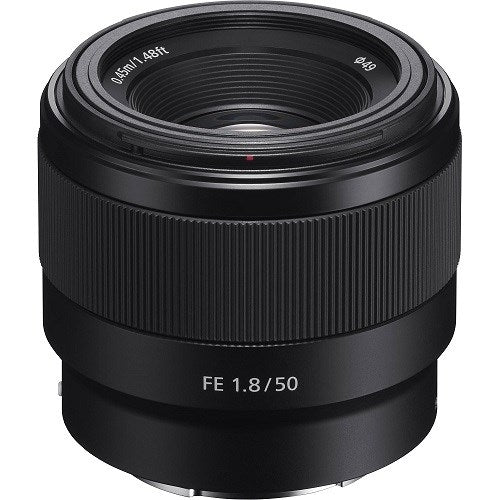Product Description
Sony FE 50mm f1.8 Prime Lens
- Lifelike detail, texture, and gradation
- Dreamy large-aperture prime lens bokeh
- Shoot at night or in dimly lit interiors
- DC motor focus
- A lens you can depend on
Small, light, bright: a great normal prime
A large-aperture 50mm prime lens is a must-have for serious full-frame camera users, and this is an excellent, affordable choice. The optical design is state-of-the-art for high image quality, and the large F1.8 maximum aperture can produce gorgeous background bokeh. On APS-C format E-mount bodies it provides equally high quality with an equivalent focal length of about 75mm.
Mobile and manageable for active shooting
Although it is a full-frame lens, this model is compact and weighs only 186 grams. Whether on the camera or in your bag it won't be a burden, and it'll be ready whenever needed. The size and weight of this lens are an excellent match for compact α7 series bodies, providing outstanding overall portability and handling.
Lifelike detail, texture, and gradation
An updated double-gauss optical configuration with an aspherical element minimises spherical aberration and coma for sharp, high-quality rendering throughout every frame. The double-gauss design also suppresses field curvature and distortion.
Dreamy large-aperture prime lens bokeh
A large F1.8 maximum aperture and 7-blade circular aperture work together to create beautiful background bokeh that can make subjects stand out. Placing a sharply focused subject in front of a smoothly defocused background is an essential technique for producing deep, dimensional images.
Shoot at night or in dimly lit interiors
The large F1.8 maximum aperture is an advantage when shooting night scenes or in dimly lit interiors. When used with an α series camera body that features in-body image stabilisation even greater low-light capability enables handheld capture of clear images in dark scenes without having to use excessively high ISO sensitivity.
DC motor focus
A new DC motor drive system has been carefully designed and implemented for optimum focus precision and speed as well as quiet operation. This system provides the same smooth for autofocus and manual focus control. Note: Focus motor sound may be recorded when shooting movies.
A lens you can depend on
A metal mount adds a sophisticated feel as well as solid durability.
For full specifications click Here

























